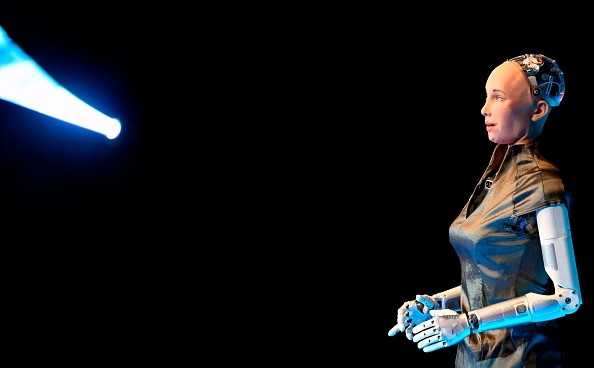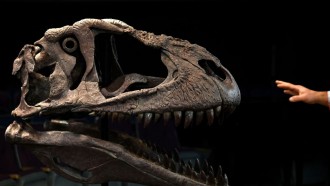A robotic skeleton was able to grow human cells. But, this one is quite different from the existing methods used to generate body tissues artificially.
One of the most interesting things about this new tissue engineering method is that the machine created stretchable human cells.

(Photo : Photo credit should read ALFREDO ESTRELLA/AFP via Getty Images)
ophia the Robot delivers a speech at the National Auditorium in the framework of the "Mexico siglo XXI" (Mexico XXI Century) forum organized by the Telmex foundation, owned by Mexican tycoon Carlos Slim, in Mexico City, on September 6, 2019. (Photo by ALFREDO ESTRELLA / AFP)
"Humanoid robots offer the prospect of providing physiologically-relevant mechanical stimulation to grafts and implants which may expedite their clinical deployment," said researchers in their new study.
The research study titled "Humanoid robots to mechanically stress human cells grown in soft bioreactors" was published in the Nature Communications Engineering journal on May 26.
Robotic Skeleton Grows Stretchable Human Cells!
According to BGR's latest report, the new tissue engineering method relied on a robotic skeleton (shoulder joint) to routinely exercise human cells.

(Photo : Photo by Oli Scarff/Getty Images)
Robotics student Gildo Andreoni interacts with a Dexmart robotic hand built at the University of Bologna in the Robotville exhibition at the Science Museum on November 29, 2011 in London, England. The Science Museum's Robotville exhibition showcases 20 unique and cutting-edge robots from European research laboratories, it is free to enter and runs from December 1-4, 2011.
Also Read: Nanorobots of About 200 Nanometers Wide Can Remove Microscopic Pollutants in the Water
The movements made by the machine are comparable to the common actions of a real human being. Involved scientists used a bioreactor with biodegradable string filaments, which can stretch between the two anchor points.
These filaments played a crucial part in the new study since they housed the human cells. Experts also filled the strings with nutrient-rich liquid to ensure that the human tissued would grow properly.
Thanks to this, the robotic skeleton encouraged growth in the human cells in just two weeks.
Can This Be Applied in Medical Operations
For the past few years, artificially-grown human tissues are commonly contained in static machines. Because of this, the generated cells commonly don't have the ability to stretch.
With the new tissue engineering method, this can soon change. However, it still needs a lot of work before it can actually be applied in actual human medical operations.
Pierre-Alexis Mouthuy of the University of Oxford's Botnar Institute of Musculoskeletal Sciences explained that it is still hard to conclude that their method is efficient with other tissue engineering techniques.
On the other hand, robotic buoys created by a group of researchers are expected to protect whales from colliding ships.
Meanwhile, Ford's KUKA-built robots can run carbon 3D printers, even without human interactions.
For more news updates about robots and other kinds of machines, always keep your tabs open here at TechTimes.
Related Article: Japanese Researchers Create 'Sixth Finger' Robot: Here's Why
This article is owned by TechTimes
Written by: Griffin Davis





